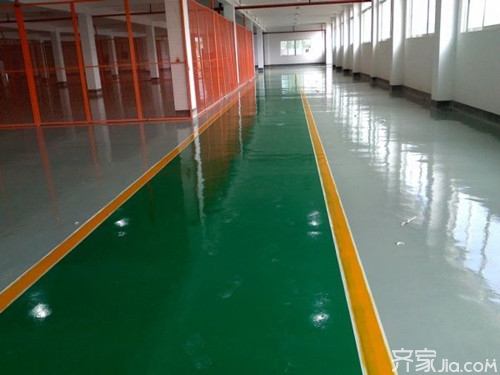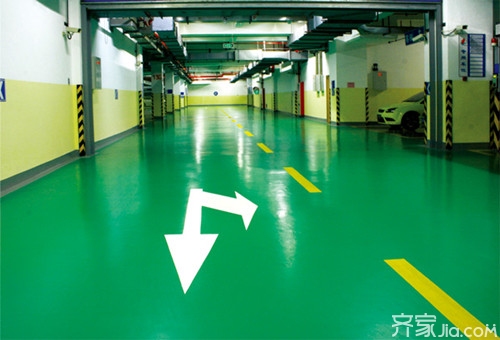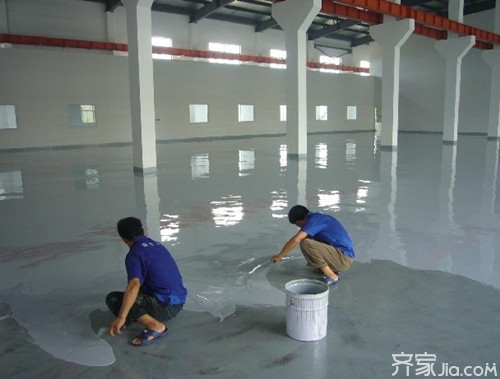Epoxy floor is a kind of modern new floor with wear-resistant, high-strength and beautiful appearance. Epoxy floor construction has no joints, solid texture, anti-corrosion, good chemical resistance, easy maintenance, dust-proof and low maintenance cost. With many advantages, epoxy floor construction can be designed according to different uses and needs. Epoxy floor construction can be divided into: epoxy stone floor, epoxy self-leveling floor, epoxy sand sand pressure floor, epoxy mortar floor, epoxy flat floor. Epoxy floor construction prices are different because of different construction methods and options of epoxy flooring . What is the specific price of epoxy floor construction? The following is my specific introduction to the construction price of epoxy floor , I hope everyone can learn from the epoxy floor construction.

Epoxy Floor Construction Introduction
Epoxy resin in epoxy floor construction refers to a type of synthetic resin that contains two or more epoxy groups in the molecular structure. Epoxy flooring is highly reactive, allowing epoxy resins to react with many different types of curing agents to form a three-dimensional network structure. So that the epoxy floor construction has a strong adhesion and high hardness. Linear epoxy resin has poor water resistance and is used for epoxy floor construction in volatile coatings.
Epoxy floor construction price
Epoxy floor construction due to different performance construction methods are different, so that the price of epoxy floor construction is also different, thin coating type epoxy floor paint price is relatively economical, some epoxy floor construction thickness in the 2-3mm When the price is about: 28 yuan -40 yuan, thin coating type epoxy floor construction has a seamless, up to the mirror effect, flat bright, can also be made into matt, easy to clean, tough, wear-resistant, easy to maintain , corrosion resistance, impact resistance, strong adhesion, easy construction, economical and practical and many other advantages. It is widely applied to the workshops, factories, garment factories, biological engineering workshops, underground parking plants, dust-free clean rooms and other places.
Note: This price is for reference only! Due to geographical differences, of course, the price will be different. For more details on the prices, please refer to the local distributors!

Epoxy floor construction process:
First, construction preparation
Before the construction of the epoxy floor, construction preparation must be done first. The preparation includes epoxy floor paint materials and construction equipment. Epoxy floor paint materials need epoxy primer, epoxy middle coating, epoxy topcoat, putty powder, quartz sand and thinner; construction equipment needs grinding machine, grinding machine, milling machine, shot blasting equipment, Vacuum cleaner, broom, mixer, weighing, bucket, roller, floor paint (flat mouth, round mouth) boring knife, flat bottom scraper.
Second, the primary treatment
Before the construction of the epoxy floor, the foundation treatment of the epoxy floor shall be carried out. The main purpose is to completely expose the damaged, dusty, loose, weakly viscous, cracked, empty drum parts, floating mortar, and old epoxy. Cement agglomerates, etc., are polished and polished, and the wastes such as floating ash and contaminants on the surface of the grassroots are cleaned, and then construction of epoxy floor can be started.
Third, the construction steps
(a) epoxy primer coating
1. Before the construction, it must be ensured that the ground is clean; if there is debris, it must be removed;
2. Mix epoxy resin and curing agent in the correct proportion,
3. After stirring, apply it with a scraper or roller.
4, require soaking to strengthen the attachment force.
5, after the first dry solid epoxy coating.
(B) Epoxy Middle Coating Construction
1. Before the construction, it must be ensured that the ground is clean; if there is debris, it must be removed;
2, the epoxy resin and curing agent are mixed and stirred in the correct proportion, and a certain amount of quartz sand is added according to the ratio;
3. Stir well and pour it on the ground. Use a guillotine knife to split the material evenly according to the designed thickness to increase the strength and impact resistance; make the ground more robust and compressive.
4. After the middle coating is solidified, it is polished to smooth the sag and particles on the surface.
5, dust clean.
Inspection method: whether the construction handover processing is appropriate, the baseboard position is straight, and there is no separation from the wall, and the formation is smooth.
(three) epoxy putty construction
1. After cleanly stirring the epoxy resin and quartz powder on the clean floor, use a uniform knife to scrape on the ground to increase the combination between the middle coating and the surface layer, and further adjust the ground. The flatness;
2, depending on the actual needs of the construction of the number of times required to achieve a smooth hole, no batch knife and sand grinding prevail.
Inspection method: Make the ground completely flat and without holes, no batch knife-stamping and sand-grinding can be used for surface coating construction.
(4) Epoxy topcoat construction
1. It needs to be kept clean before construction. If there is debris, it needs to be removed;
2. Mix the B component of the top coat material first; add the curing agent and mix thoroughly;
3, use the roller to evenly coat the material;
4. After the first pass of the coating is dried, apply the second coat again.
5, flat paint coated with a trowel to scrape it again.
6. Pay attention to the treatment of successive construction junctions; uniform coating requirements and no sagging.
Test method: uniform ground color, no sagging, no pinholes, smooth, smooth.

How to Apply Epoxy Floor Paint in Winter
Epoxy floor coatings can be limited at low temperatures and cure slowly or do not dry during lower temperatures in winter. Epoxy floor construction is a problem for epoxy floor coatings at low temperatures. The party believes that as long as some adjustments are made in the selection and use of raw materials, catalysts, and additives in the production of materials, it is possible to solve the problem that epoxy floor coatings will not cure in winter at low temperatures.
Epoxy floor paint can not use common polyamide curing agents in cold construction in winter, but adopt epoxy resin products that can be cured at low temperature in winter. For example: some amine adduct curing agents can be cured at -5°C, polyisocyanate epoxy coatings can be cured at -10°C, and some epoxy coatings can be added at -17 The construction cures at °C. However, it needs to be known that these epoxy resin coating products that can be cured in winter have a relatively long time to complete curing. Adding appropriate accelerators, the temperature of the reaction can be appropriately increased to facilitate the reaction, and the production cycle can be shortened. . However, adding too many accelerators will also cause the film to be brittle, so use it with caution!
Editor's summary: The above is the coating class: Epoxy floor construction price and construction process related to the introduction, hoping to help meet the needs of friends! For more information, please continue to follow our website. Follow-up will present more exciting content. You can also purchase more of your favorite products on Qijia Mall!
Construction installation decoration price curtain fabric price construction bottom decoration construction knowledge
Roller bearing, one of the two members of the class of rolling, or so-called antifriction, bearings (the other member of the class is the Ball Bearing). Like a ball bearing, a roller bearing has two grooved tracks, or races, but the balls are replaced by rollers. The rollers may be cylinders or truncated cones. Only radial loads (i.e., loads perpendicular to the axis of rotation) can be carried when the rollers are cylindrical, but with conical rollers both radial and thrust, or axial, loads (i.e., ones parallel to the axis of rotation) can be carried. A needle bearing has cylindrical rollers that are relatively slender and completely fill the space between the races; in many cases the inner race is dispensed with. Because there is line contact between a roller and the races, while in a ball bearing there is point contact, in a given space a roller bearing can carry a greater radial load than a ball bearing.
Roller bearings are used in all main shaft and auxiliary drive shaft applications to support pure radial load, and allow for axial shaft elongation due to temperature changes with no additional load effect on the bearing. They are usually located at the ends of the turbine and compressor shafts and are often mounted in a housing, but separated from it by a layer of pressurized oil known as a squeeze film damper.
In many cases, instead of having a separate inner race for roller bearings, the [inner race" is an integral part of the shaft or stub shaft. This reduces complexity, weight, and build-up of concentricity tolerances. Overall, this is cost effective, but the cost of replacement or repair is likely to be higher than for separate inner races.
Roller Bearing,Self-Aligning Roller Bearing,Double Row Roller Bearing,Neddle Roller Bearing
Shijiazhuang Longshu Mechanical & Electrical Equipment Trading Co., Ltd. , https://www.lsjgbearing.com
